If you have yet to hear about stinkhorn fungi, you’re in for a treat. Well, not actually, given the fact that these fungi literally stink and look like… let’s just say they have a particularly phallic nature about them. Members of the aptly-named Phallaceae family, stinkhorn fungi grow around the world. There are roughly 80 different species of stinkhorns, with the highest concentration in warmer regions.
In this article, we will address what stinkhorn fungi are as well as why they smell so bad. We’ll even give you a list of some of the most common and typically seen types of stinkhorns so that you can properly identify any that might be growing in your own backyard. Brace yourself for some unique and positively bizarre fungi!
What are Stinkhorn Fungi?
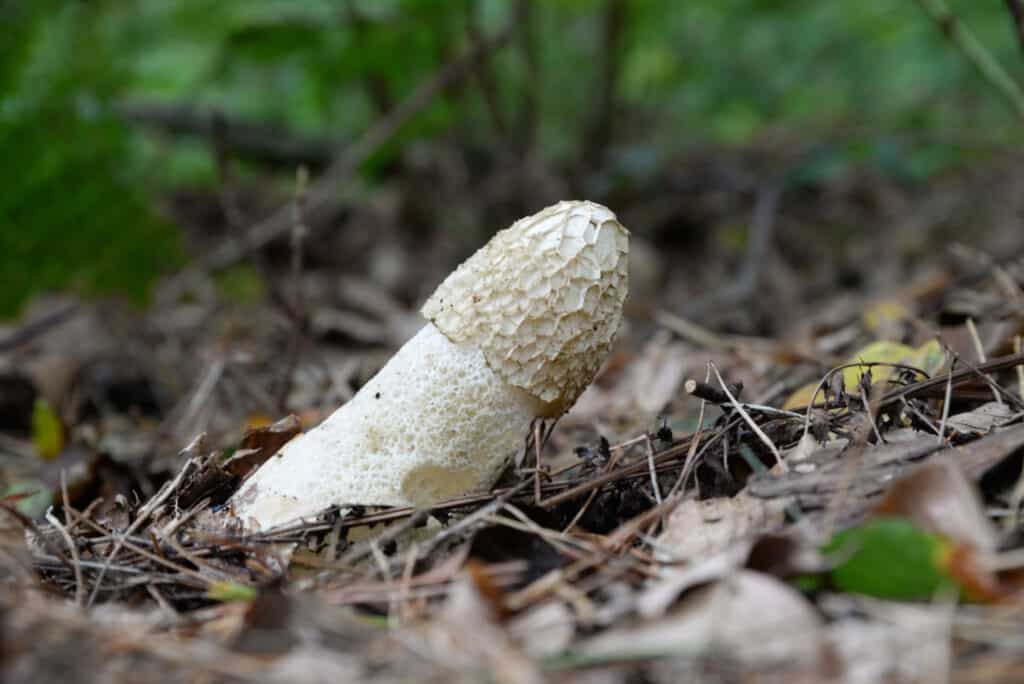
There are stinkhorns found around the world, but they enjoy damp conditions most of all.
©Rini Kools/Shutterstock.com
Classified as a type of carrion plant, stinkhorn fungi are a type of fungus or mushroom that commonly grows in mulch or organic soil. More often than not, flies or other insects spread stinkhorn fungi across gardens and lawns, their spores incredibly easy to transport. This also makes stinkhorn fungi difficult to remove from the average yard. There are types of stinkhorns all over the world, but typically always in organic soil.
Why Do Stinkhorn Fungi Smell Bad?
The reason that stinkhorns smell so bad is that they need to attract insects in order to spread. Often smelling like feces or decay, stinkhorn fungi release this odor into the air so that flies, drawing bugs to them. Once the insects arrive, the spores from stinkhorns attach to them, making it easy to propagate and spread stinkhorns throughout a garden or backyard.
This is why many people have a difficult time removing stinkhorn mushrooms from their yards: their spores are next to impossible to control and these fungi often remain hidden just beneath the surface. While they reek and aren’t exactly attractive, stinkhorns can add to or recycle nutrients in garden soil, as well as bring plenty of pollinators to a garden in need!
Types of Stinkhorn Fungi
If you are wondering whether or not you have a stinkhorn fungus in your own backyard, here are some of the most common types of stinkhorns around the world!
Common Stinkhorn
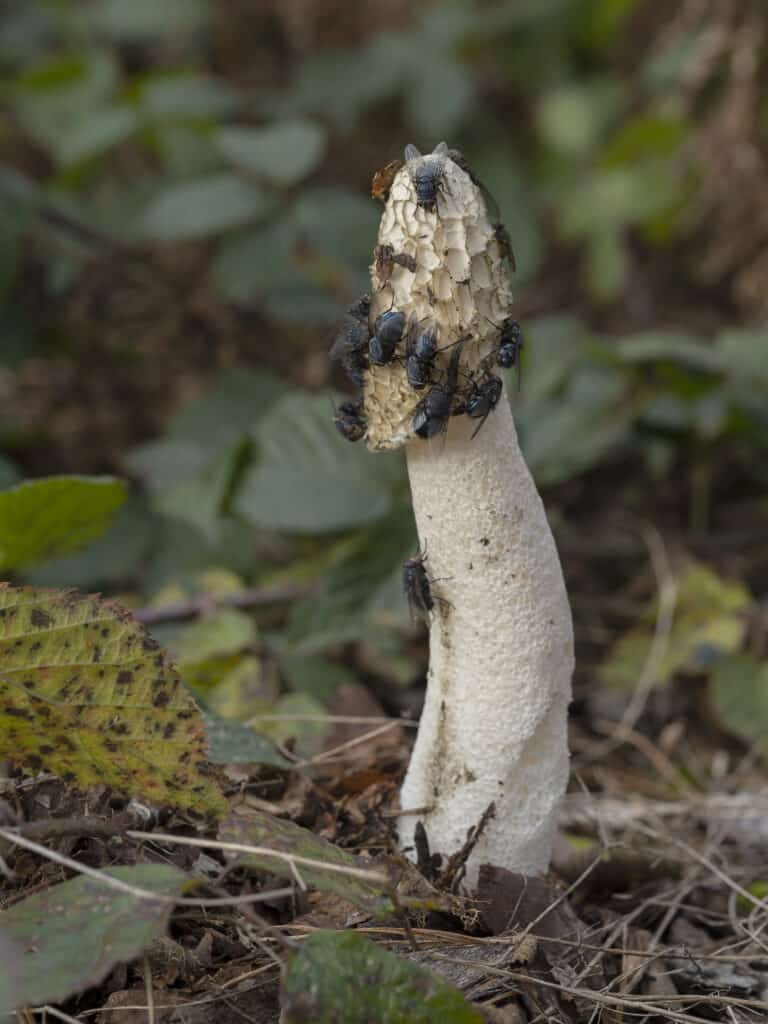
Common stinkhorn mushrooms grow in wooded areas and in gardens with mulch.
©iStock.com/MikeLane45
Also known as witch’s eggs, the common stinkhorn can be classified as Phallus impudicus. It grows throughout mulched garden beds and forested regions of Europe and North America. The beginning stages of this stinkhorn (the eggs) are regularly consumed in multiple countries. In addition to its distinct smell, the common stinkhorn is strong enough to force its way through just about any surface, including concrete!
Dog Stinkhorn
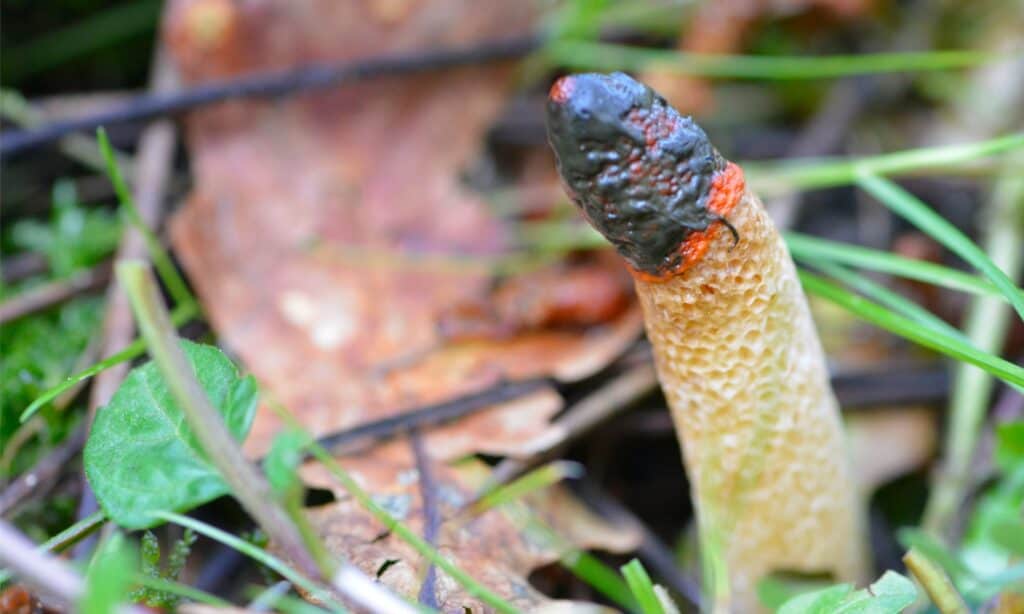
We don’t really need to mention what a dog stinkhorn looks like.
©iStock.com/Micalitus
Sprouting in late summer and fall, the dog stinkhorn thrives in moist areas with plenty of leaves and other plant debris. Botanically classified as Mutinus caninus, dog stinkhorns have a similarly plain stalk like the common stinkhorn, just with a dark or pink tip. Dog stinkhorns range in color depending on just how many spores are on the outside of them.
Long Net Stinkhorn

One of the prettier types of stinkhorn fungi has to be the long net or bamboo stinkhorn. Not only is this stinkhorn common throughout the world, but it is also commercially cultivated in China for culinary purposes. Classified as Phallus indusiatus, the long net stinkhorn has a lengthy historical use in Chinese medicine and cuisine.
Basket Stinkhorn
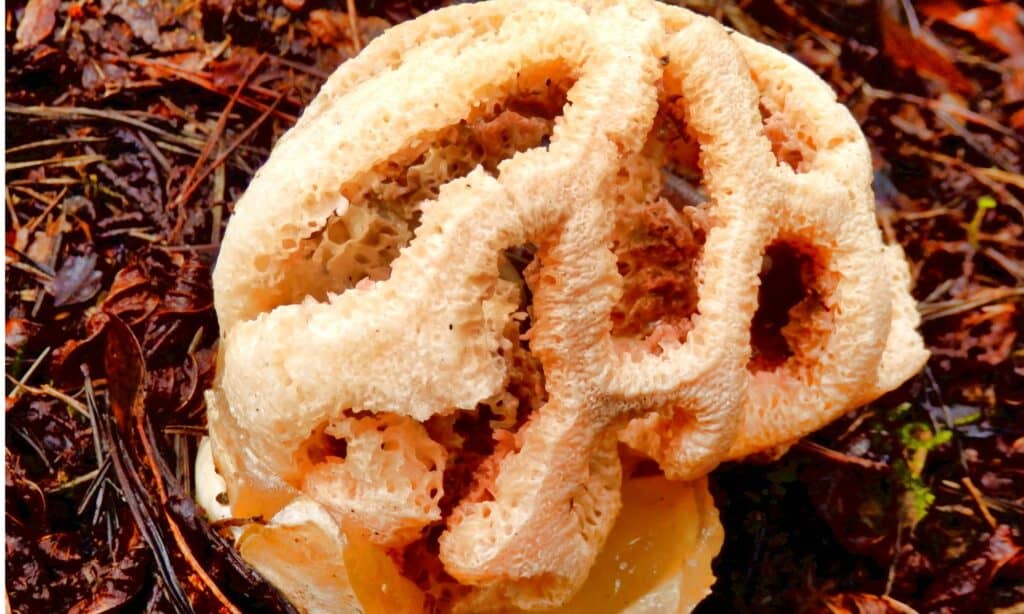
You can find basket stinkhorns in a variety of colors.
©iStock.com/PlazacCameraman
Once only native to Europe, the basket stinkhorn is found around the world nowadays due to international mulch distribution and importation. Commonly found in shades of red, basket stinkhorns form unique and eye-catching baskets atop decomposing plant material. In fact, these stinkhorns contain the same chemicals in it that make tomatoes and carrots red and orange!
Octopus Stinkhorn

The average octopus stinkhorn doesn’t have eight appendages.
©iStock.com/LeoMalsam
One of the creepiest stinkhorns out there has to be the octopus stinkhorn. Classified as Clathrus archeri, octopus stinkhorns were once native to New Zealand and Africa. However, it is just as widely distributed now as any other stinkhorn, forming eerie tentacles during its second stage of growth. There are even albino or all-white octopus stinkhorns, still accompanied by the smell of rotting flesh.
Ravenel’s Red Stinkhorn
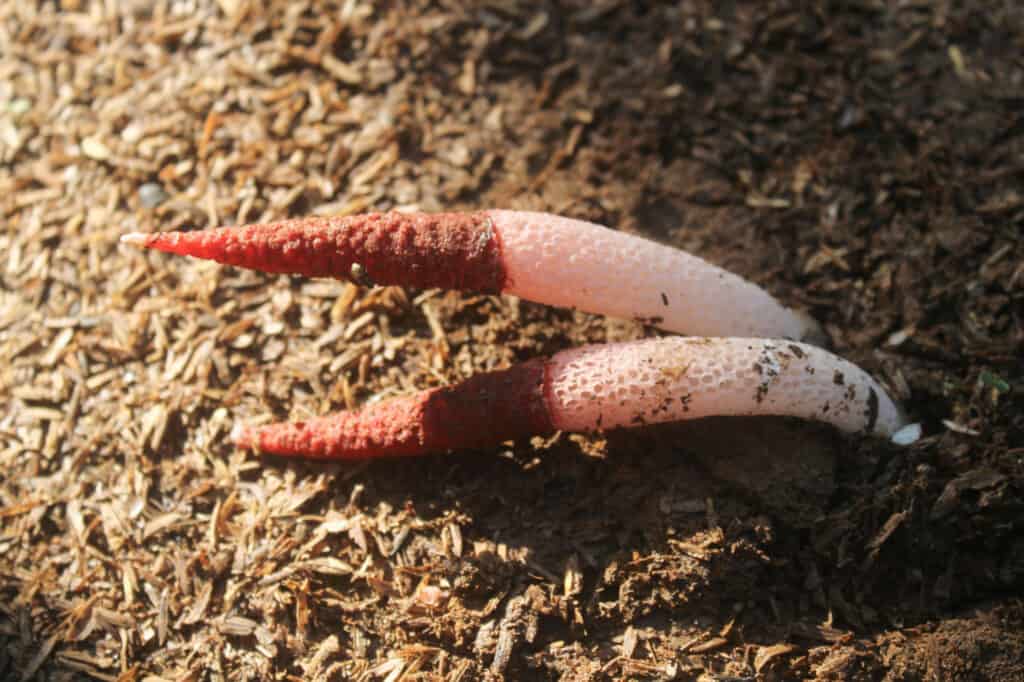
While rare, Ravenel’s red stinkhorns still have a trademark scent.
©Musrifin/Shutterstock.com
The botanist and mycologist known as Henry William Ravenel was responsible for discovering a number of stinkhorn fungi. In fact, an entire genus is named after him, and the Ravenel’s red stinkhorn is difficult to tell apart from a few other stinkhorn species.
Elegant Stinkhorn
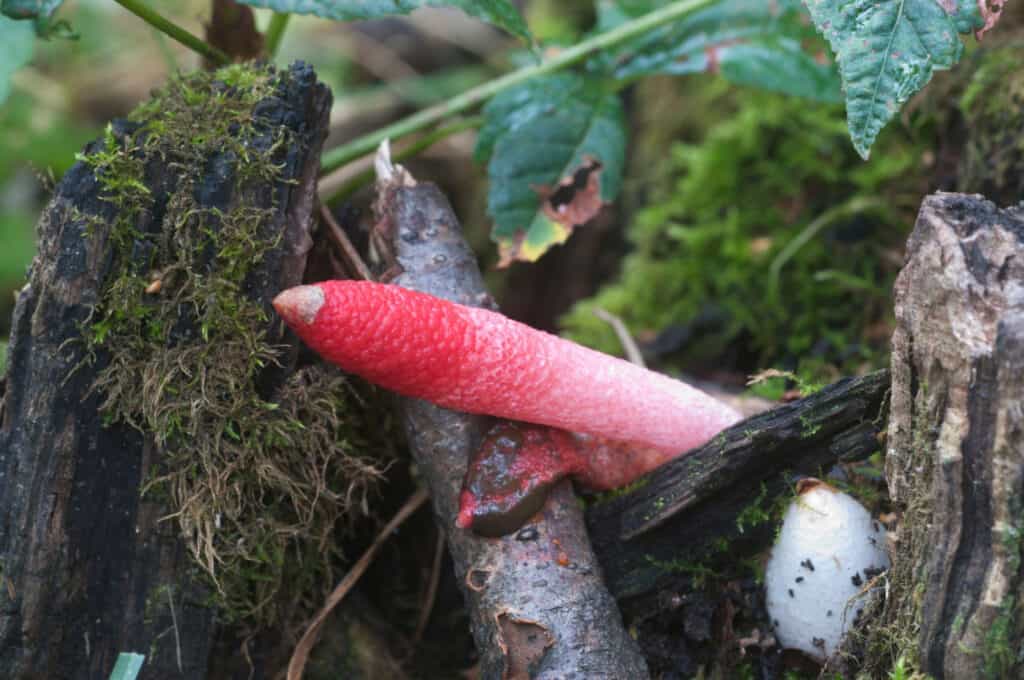
There are a number of stinkhorns named after Henry William Ravenel, including the elegant stinkhorn.
©Alexander62/Shutterstock.com
Just like Ravenel’s red stinkhorns, the elegant stinkhorn has a striking red tip. Aptly classified as Mutinus elegans, the elegant stinkhorn has only been discovered in certain areas of the eastern United States as well as Japan. It is thinner overall compared to dog stinkhorns and has a less bulbous tip compared to Ravenel’s red stinkhorns.
Colus Hirudinosus Stinkhorn
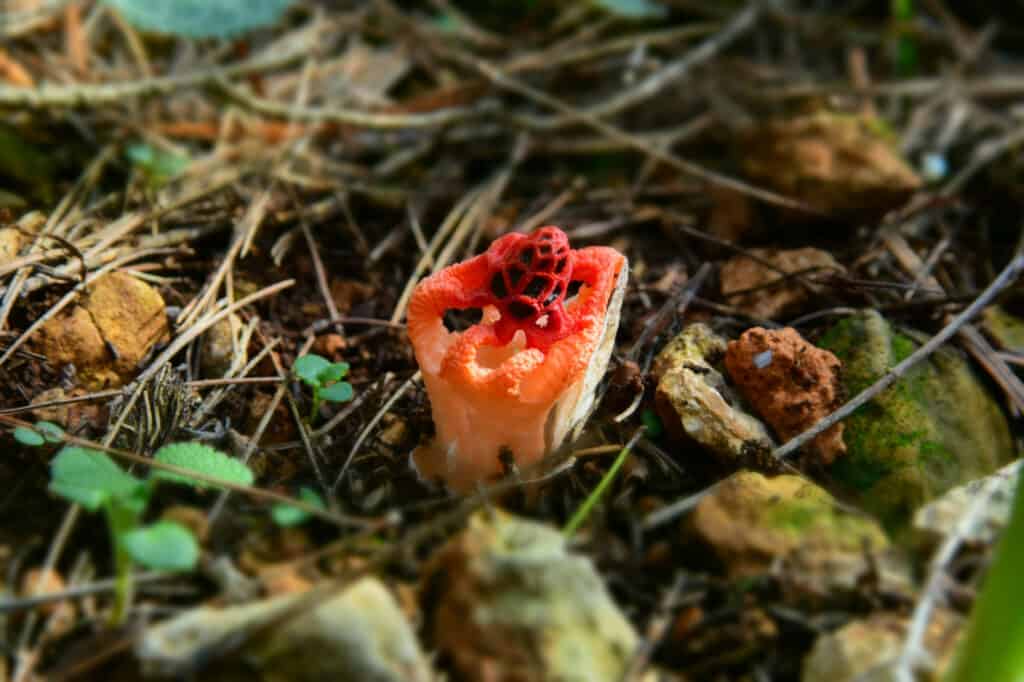
The unique basket or purse shape of
Colus hirudinosusmakes it an intriguing stinkhorn.
©Alona sadovsky 1987/Shutterstock.com
Not to be confused with the basket stinkhorn, Colus hirudinosus is another fungus with a basket-like structure. Forming lattices around its gleba or spores, Colus hirudinosus most commonly grows in Europe, particularly the Mediterranean.
Laternea Pusilla Stinkhorn

The
Laternea pusillastinkhorn isn’t exactly phallic in appearance.
©This image was created by user Daniel Jimenez (Daniel CR) at Mushroom Observer, a source for mycological images / CC BY-SA 3.0 – License
Different from the rest of this list, the Laternea pusilla stinkhorn forms its spores inside a unique archway or ring of red tendrils. This stinkhorn is less phallic and more… yonic, for lack of a better word. It still has the trademark carrion scent accompanying it, and it has been discovered in South America and Costa Rica.
Up Next…
- What Do Fungi Eat? The 3 Main Diets of Fungi
- Are Mushrooms & Other Fungus Plants?
- The 8 Different Types of Lawn Mushrooms
The photo featured at the top of this post is © iStock.com/LeoMalsam
The information presented on or through the Website is made available solely for general informational purposes. We do not warrant the accuracy, completeness, or usefulness of this information. Any reliance you place on such information is strictly at your own risk. We disclaim all liability and responsibility arising from any reliance placed on such materials by you or any other visitor to the Website, or by anyone who may be informed of any of its contents. None of the statements or claims on the Website should be taken as medical advice, health advice, or as confirmation that a plant, fungus, or other item is safe for consumption or will provide any health benefits. Anyone considering the health benefits of particular plant, fungus, or other item should first consult with a doctor or other medical professional. The statements made within this Website have not been evaluated by the Food and Drug Administration. These statements are not intended to diagnose, treat, cure or prevent any disease.
Sources
- Wikipedia, Available here: https://en.wikipedia.org/wiki/Phallaceae
- The Wildlife Trusts, Available here: https://www.wildlifetrusts.org/wildlife-explorer/fungi/stinkhorn-fungus
Thank you for reading! Have some feedback for us? Contact the AZ Animals editorial team.







